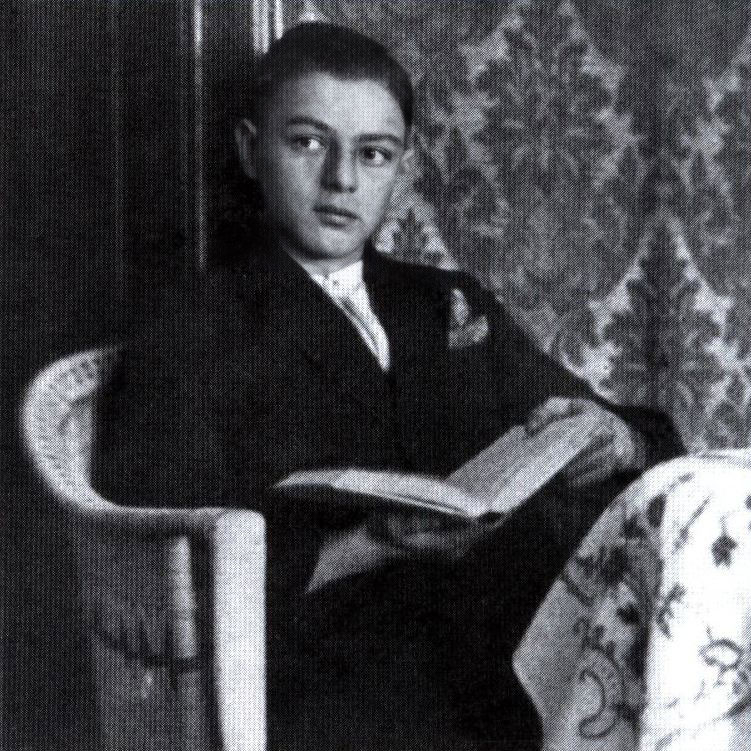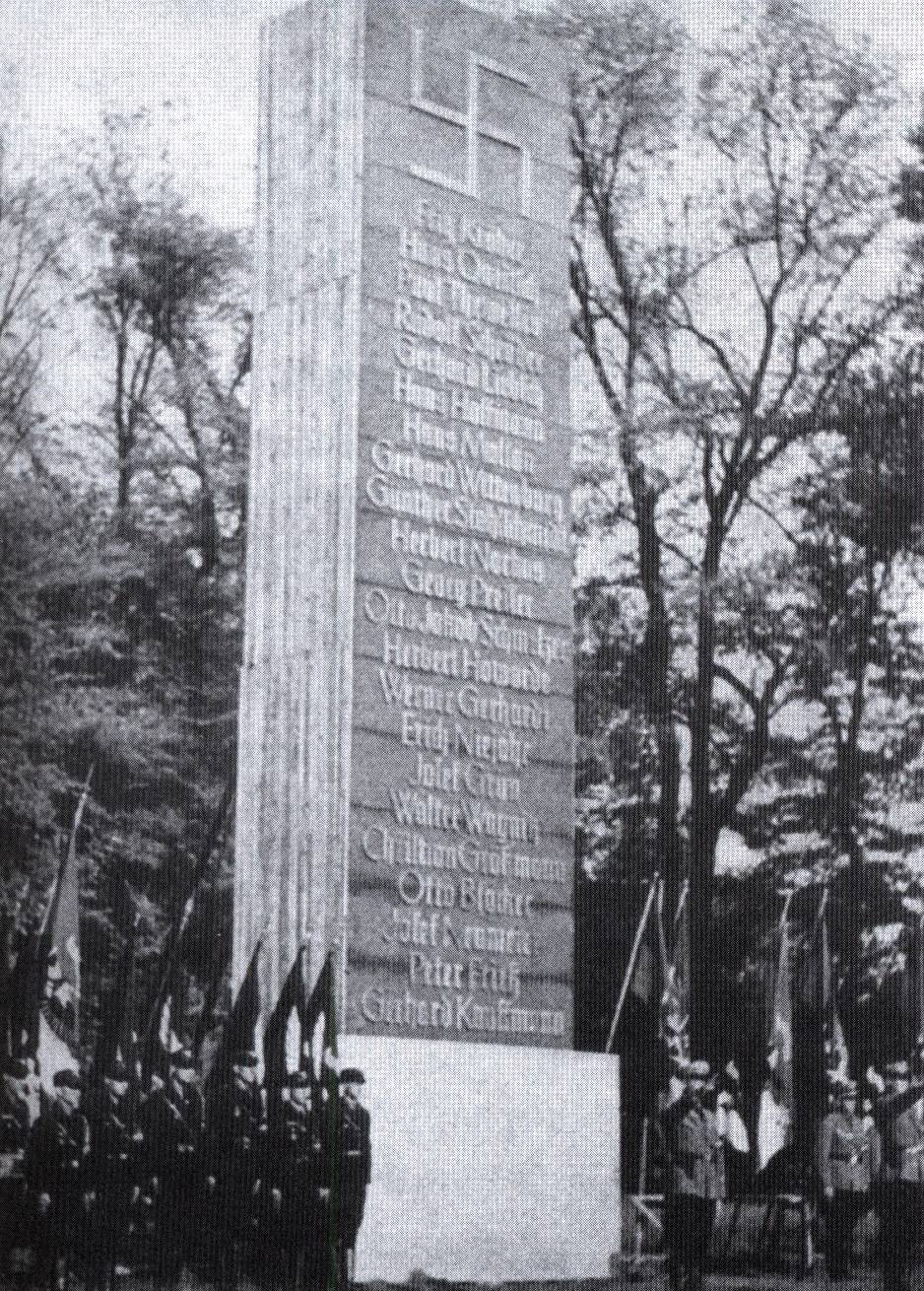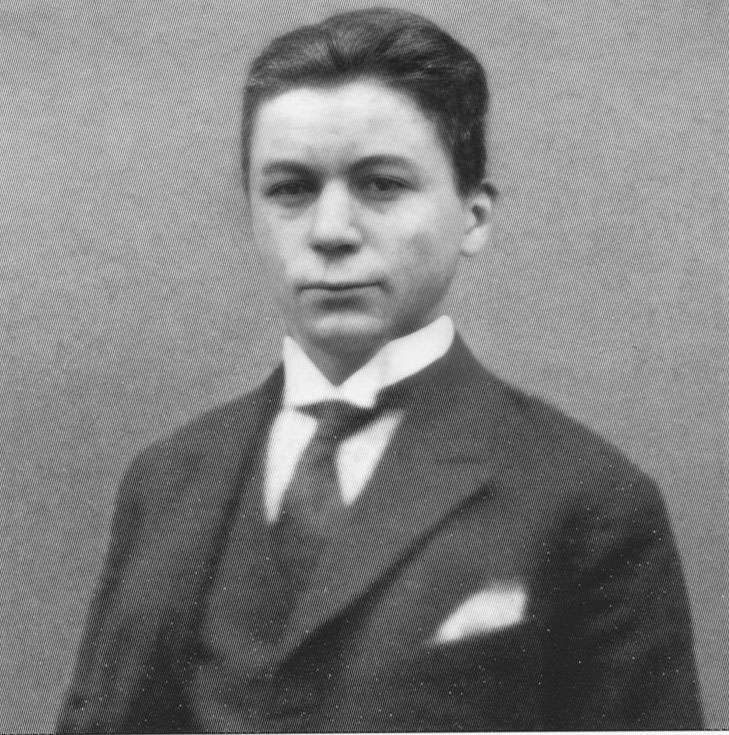
Blood Martyrs of the National Socialist Movement
The Year 1927
Otto Senft
(*14 September 1882, † 13 February 1927)

Otto Senft was a resistance fighter against the Weimar Republic and a Blood martyr of the National Socialist movement.
Otto Senft from Bochum was a front-line fighter from 1916 to 1918. He was wounded twice and received the Iron Cross I and II Class for bravery in the face of the enemy. Class. As a private he was discharged, and after the French invaded the Ruhr he was again a fighter in the front ranks against the invader. Twice he was arrested by the French and severely maltreated. He managed to escape to Fürth, where he stayed until the Ruhr was free again. After his return, he immediately promoted Adolf Hitler’s movement again. He joined the NSDAP in 1924 and the Völkischer Schutz- und Trutzbund. As early as 1925, his barbershop in Bochum had a sign saying: „Jews are not served here“. Day after day, party comrades gathered in his shop; they worked here until late at night to win friends for Adolf Hitler, but to meet the enemies. When the alarm went off, the SA men gathered at his place. With his comrades, among them the Gauleiter of Westphalia-South, Josef Wagner, he cleared meetings and streets of Marxists. On the return journey from a meeting in Dortmund on 12 February 1927, at night, the Bochum SA, among whom was Otto Senft as usual, was shot at from ambush by communists near the Dorstfeld railway bridge. The SA men took cover on the floor of the truck until they thought they were out of the line of fire. Then they started to charge against the cowardly communist attackers. Otto Senft was shot in the pelvis as he tried to jump from the truck. Days later, on 13 February 1927, this fighter succumbed to his wound, leaving behind his wife and a child. The murderers could never be found and punished because the Severing police of the time made no serious effort to catch the criminals.
His last words were:
“For Adolf Hitler I will always fight“.
Wilhelm Wilhelmi
(*27 January 1909, † 6 March 1927 in Nastätten)

Wilhelm Wilhelmi was a resistance fighter against the Weimar Republic and a Blood martyr to the National Socialist movement.
In Gauhessen-Nassau, Wilhelm Wilhelmi, an eighteen-year-old labourer from Singhofen, was hit in the forehead by a Marxist bullet fired by a Landjäger while on a march to Nastätten on 6 March 1927.
Wilhelm Wilhelmi, a 17-year-old from Singhofen, was admitted to the SA while still on his way to the hospital; he died as a martyr for the movement. In the following years, regular graveside ceremonies were held, in March 1934 a memorial plaque was placed at the Hotel Guntrum in Nastätten and the former Römerstraße was renamed „Wilhelm-Wilhelmi-Straße“.
Karl Ludwig
(*9 October 1907, † 10 April 1927)

Karl Ludwig was a resistance fighter against the Weimar Republic and a Blood martyr to the National Socialist movement.
Karl Ludwig joined the NSDAP and the SA in 1927. On 8 April 1927, Karl Ludwig was on sick watch at the bedside of an SA comrade. When the doorbell rang, he stepped out into the street. Then a communist murder horde attacked the barely twenty-year-old SA man, a waiter from Wiesbaden, beat him down and abused him in brutal brutality, shooting him so that he succumbed to his wounds the next day.
Georg Hirschmann
(*6 May 1888, † 26 May 1927)

Georg Hirschmann in Munich was a resistance fighter against the Weimar Republic and a Blood martyr to the National Socialist movement.
Georg Hirschmann, together with five, other sources speak of seven, other comrades, was chased through Munich for more than an hour by a red mob of around 100 people because of his National Socialist views, and then murdered.
Rösch states on page 420:
„After exchanges of words, about 100 members of the Reichsbanner rushed six SA people through the streets for more than an hour and maltreated them with feet, wooden slats and clubs. In the process, Georg Hirschmann was finally beaten to death.“
How the red terror was allowed to rage in the streets of German cities in 1927 without being hindered by the state organs when it was aimed at National Socialist fair game is also shown by a report in the „Völkischer Beobachter“ of 28 May 1927 about a Marxist attack on National Socialists on 25 May 1927, to which the SA man Georg Hirschmann, a shoemaker from Munich, fell victim:
Heavily armed Reichsbanner raid in Humboldtstraße.
The Reichsbanner armed with steel rods, daggers, manslayers - cattle-like brutality of the crowd. The attack lasts an hour without police intervention.
Munich, 26 May 1927
Yesterday evening at 7.30 o’clock, a group of eight men of the National Socialist SA, who were about to leave for the general roll call, were attacked by a horde of at first twenty jeering and shouting boys and harassed with the crudest swear words. When the members of the SA refused, the provocateurs called for reinforcements from the nearby Reichsbanner pub „Pilgersheimergarten“ and the pub of the red cyclists’ association „Solidarität“, which quickly grew to between one hundred and one hundred and fifty men, who were clearly recognisable as members of the Reichsbanner by their badges and caps. The masses, equipped with all kinds of weapons, then attacked the SA. troops, who could only with difficulty resist the immense superiority. Under the continuous shouting of „Beat them to death!“ the National Socialists were pursued over the Wittelsbacher Bridge through Kapuzinerstraße to Kapuzinerplatz and continually beaten. None of the eight men remained unwounded. A thirty-nine-year-old father and SA member was beaten so bloody over the head with heavy batons that he collapsed unconscious and had to be dragged to the police station at Kapuzinerplatz to avoid being beaten to death by the hordes. Only at Kapuzinerplatz did the police intervene and clear the street, arresting several Marxists and Reichsbanner members. The seriously wounded National Socialist Georg Hirschmann was taken to the surgical clinic by ambulance. Twenty-four hours later Hirschmann succumbed to his injuries without regaining consciousness. Almost all the other National Socialists also had to seek medical treatment.
Hans Queitzsch
(* 24. 10. 1910 - † 20. 6. 1927)
The district of Saxony

Hans Queitzsch is not mentioned in most lists and enumerations of Blood martyrs.
Despite the fact that there was no mention of a death or assault at this time even in the NSDAP-affiliated „Tageszeitung“ in Chemnitz, the Hitler Youth named Hans Queitzsch as one of the movement’s martyrs. Hans was the only son of the master tailor Paul Robert Queitzsch, himself a party member since 1925, and his wife Clara.
Queitzsch attended the Bemsbach School in Chemnitz from 1916 to 1920, after which he graduated from the Realschule, which was later renamed the Adolf Hitler Oberrealschule.

Hitler Youth holding a guard of honour at a memorial stele for the fallen of the Hitler Youth in 1937.
After finishing school, the boy initially joined the Schubert & Salzer company as a trainee, where he worked until his death. Hans Queitzsch had been a member of the Chemnitz Hitler Youth since 1926.
All that is known is that the HJ squad leader was attacked by political opponents on 18 June 1927 and died two days later from the injuries he suffered.
Gefolgschaft 4, Unterbann 2, Bann Essen-Süd of the Hitler Youth was named after the sixteen-year-old.
Eugen Eichhorn
(*14 February 1906, † 11 September 1927)

Eugen Eichhorn was a resistance fighter against the Weimar Republic and a Blood martyr to the National Socialist movement.
In the case of the SA man Eugen Eichhorn from Plauen in the Saxon Vogtland, more than three years of illness lay between the wound and death. Things were going to get dicey for the SA men in Ölsnitz, Saxony... The Sturmführer knew this and gave his men the option of going home before they left. No one left the front that had been lined up. Among the men of the Saalschutz was the twenty-one-year-old Eugen Eichhorn. He had attended the upper secondary school in Plauen and then learned to be a bank accountant. After his two-and-a-half-year apprenticeship, he was employed by the Dresdner Bank. Even as a pupil, Eichhorn was active in the Technical Emergency Aid. Via the national youth movement, he joined the Frontbann and was finally accepted into the SA. Here he took part in hall protection and election campaigns. Confrontations with political opponents were not uncommon. The SA man Eichhorn’s wild gluing actions and brawls with dissenters earned him arrests, fines and a prison sentence. In spring 1924, an NSDAP event was to take place in Ölsnitz, Saxony. The Plauen SA was assigned to protect the hall and knew the place, if not as a stronghold of political opponents, then at least as a position to be taken. After the journey from Plauen to the meeting place was interrupted by several stone-throwing incidents on the vehicles, the Brown Shirts in Ölsnitz were confronted with an overwhelming number of political dissidents. When the NSDAP supporters had entered the hall, the entrance area was suddenly occupied by communists. At a signal, the hall building turned into a desolate battlefield. Chair legs and beer mugs roared through the air, unbuckled belt and shoulder straps hurtled down on designated targets in the tumult, a heavy chandelier came crashing down on the interlocking masses, while new Communist forces kept advancing from the entrance area. Eichhorn was finally carried unconscious from the pub to the vehicle with a punctured lung after the SA had successfully cleared the hall. Although Eichhorn’s initial recovery was slow, the bank accountant took part in the 1925 German Days in Hof and 1926 in Plauen. Neither the ongoing treatments nor stays in a lung sanatorium brought lasting improvement. Soon the situation worsened to such an extent that Eugen Eichhorn could no longer leave the sickbed. The SA man died on 11 September 1927 as a result of his injuries. SA Sturm 11/134 was named after him.